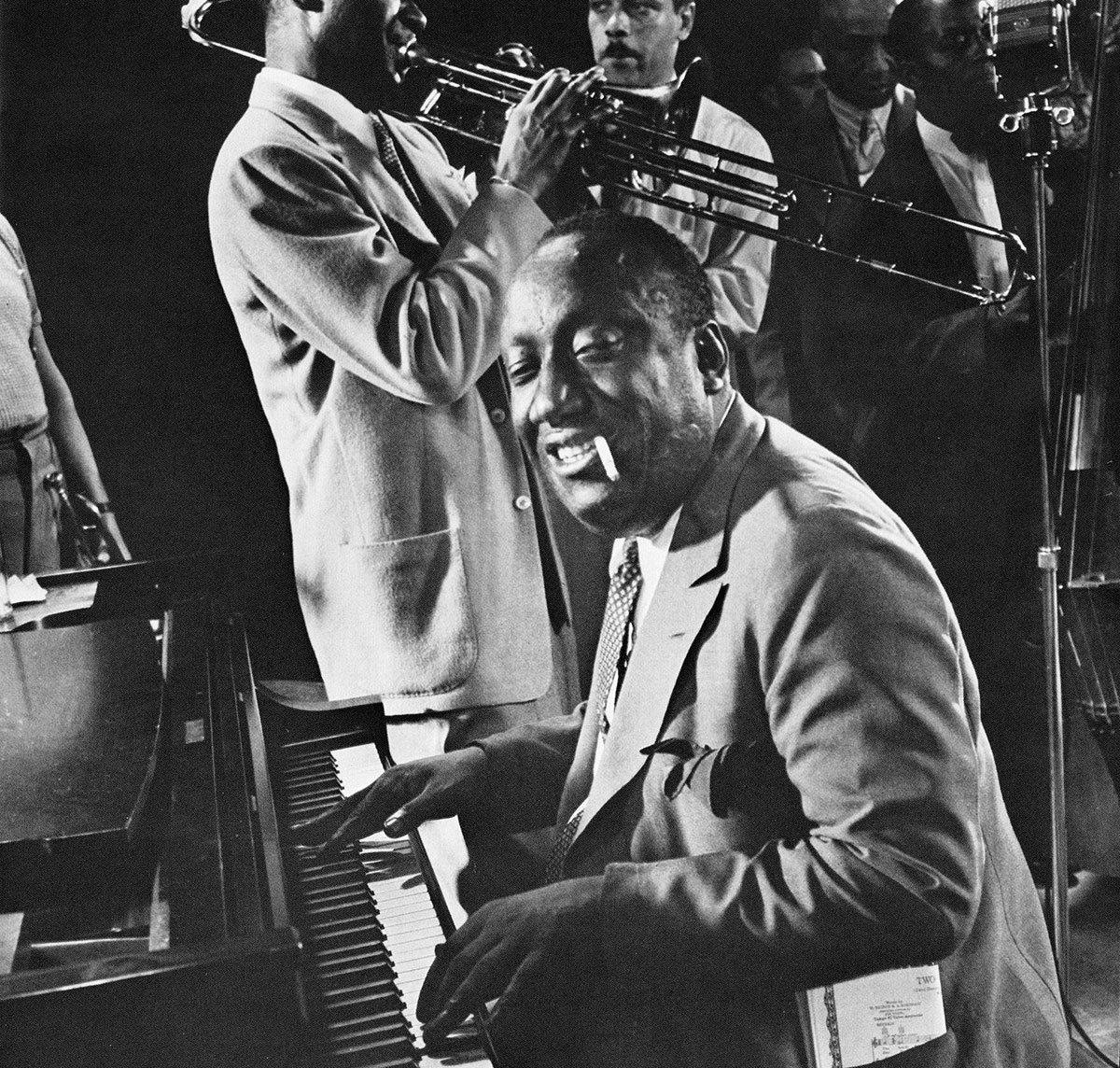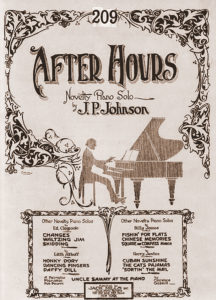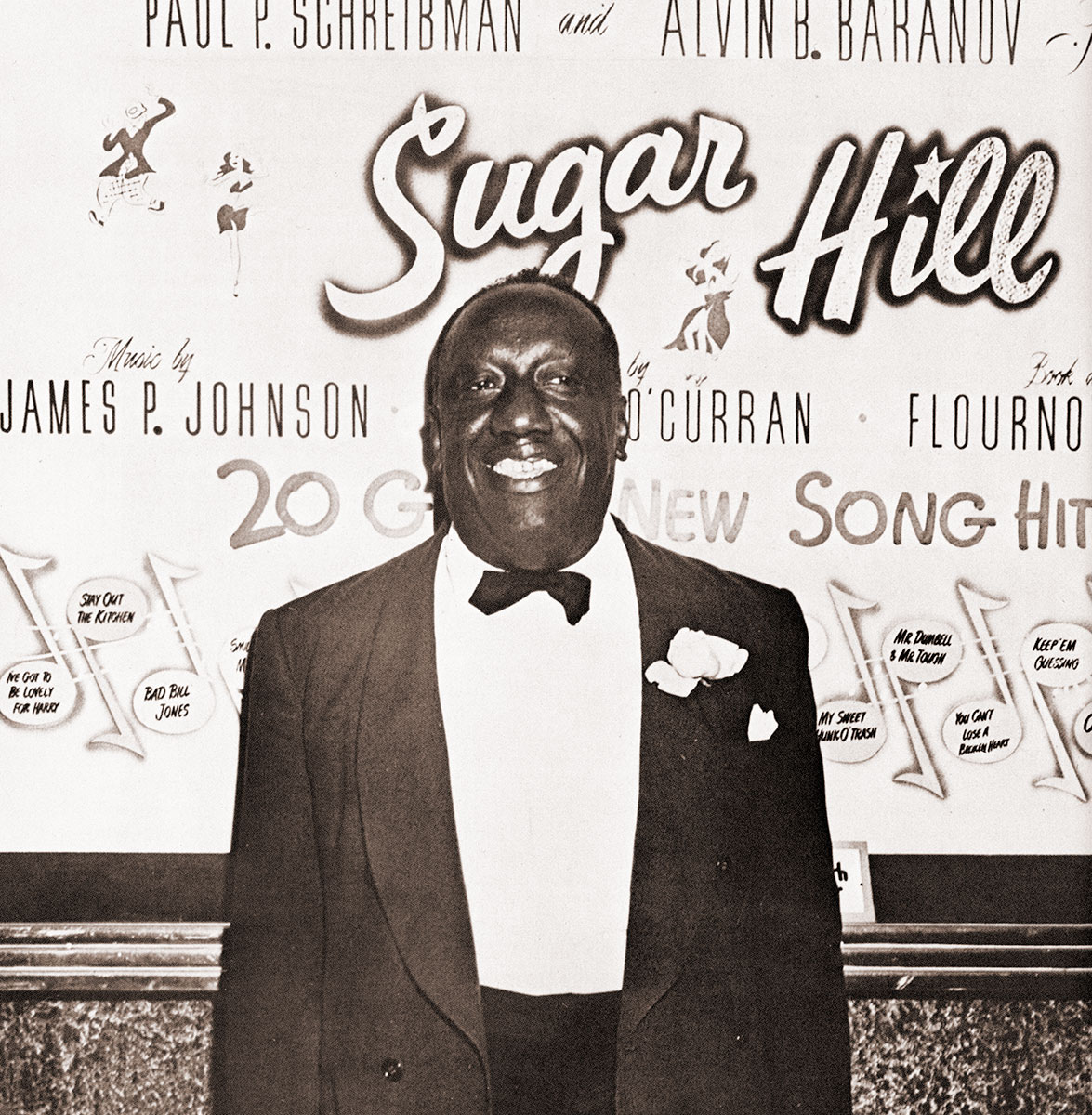Transition from Ragtime to Stride Piano
The term ‘stride’ derives from the left-hand keyboard bass line – which ‘strides’ from a chord near middle-C to a low note an octave or two below middle-C. Curiously, it’s the right-hand figures that create the characteristic rhythmic signature and swing of Stride by pushing or pulling on the rhythms of the left-hand and utilizing a wide range of pianistic devices, some borrowed from classical performance. Transitioning from Ragtime to Jazz, Johnson perfected and exemplified the Harlem Stride piano style and method.
Unlike Ragtime from which it evolved, Stride was both a written and improvised form, transmitted aurally. James P. conveyed it directly to his protégé Fats Waller who became the best-known practitioner of Harlem Stride, developing his own distinctive style. Pianist Art Tatum advanced Stride further, adding ornamental runs, dazzling arpeggios and a more sophisticated harmonic vocabulary.
Like Johnson, many of these piano artists didn’t need to see their fingers while playing. They looked around casually conversing with friends or followers while playing. Or they could play separate melodies simultaneously with left and right hands.
Stride was generally paced much quicker than Ragtime piano; Johnson often produced dizzying cascades of notes at lightning speed with unsurpassed accuracy. By 1920 his “Carolina Shout” was a jazz piano staple; mastering it was a requirement for any aspiring stride musician.
JPJ Borowsky 1920s Pt. 2 Bessie Smith & Ethel Waters.mp3
Flamboyant Style
Johnson developed a vast repertoire and reputation, becoming affluent and stylish thanks to royalties from sales of his piano rolls and sheet music. Flaunting the flashy couture expected of his profession, he cultivated a wardrobe of about 25 suits, 15 pairs of custom-made shoes, two dozen silk shirts, silk handkerchiefs and a gold or silver-knobbed cane.
Piano professionals needed a specific set of ostentatious accessories in order to be taken seriously. A dramatic silk-lined overcoat was integral to the presentation of a modern major piano professor. Removed with a flourish, the garment was placed with great ceremony to display the plush silk lining:
“We used to wear . . . a coat like a coachman’s — blue double-breasted fitted to the waist and with long skirts. We’d wear a light pearl-grey Homburg hat set at a rakish angle, then a white silk muffler and a white silk handkerchief.”
JPJ Borowsky 1930s Pt 1 Swinging solos.mp3

Jam session in New York City 1943 with Wilbur de Paris (trombone), Franz Jackson (reeds), Cozy Cole (drums) and Al Mott (bass). Gjon Mili photographer.
African American Overachiever
James P. Johnson was one of the grand geniuses of American music in multiple dimensions. Several of his 230 popular songs, like “Old Fashioned Love,” became American standards.
His creative partners were the cream of African American cultural overachievers: pianist and impresario Eubie Blake, tune smith and publisher W.C. Handy and composer William Grant Still. He composed a one-act blues opera with Langston Hughes, poet-laureate of the Harlem Renaissance.
JPJ Borowsky 1930s Pt 2 Success.mp3
Johnson created, wrote or collaborated on more than a dozen Black musicals and stage revues that were landmarks of African American theater: Keep Shufflin’, Messin’ Around, Swingin’ the Dream, Shuffle Along and Meet Miss Jones. His greatest theatrical success was “Runnin’ Wild” (1923) which produced two of his most durable hits — “The Charleston” and “(If I Could Be with You) One Hour Tonight” –providing him lifelong income.
Not yet satisfied, he sought training in classical keyboard technique, music theory, harmony and orchestration. Johnson wrote concertos, suites, symphonies and tone poems — composing 19 orchestral works altogether. Some were played at Carnegie Hall as early as 1928. Others were never performed nor published in his lifetime.
JPJ Borowsky 1930s Pt 3 At his Best.mp3
- ← Previous page
- (Page 2 of 3)
- Next page →




See also:
James P. Johnson on Wikipedia:
https://en.wikipedia.org/wiki/James_P._Johnson
In Search of James P. Johnson:
https://ethaniverson.com/rhythm-and-blues/in-search-of-james-p-johnson/
James P. Johnson on Jazz Rhythm:
http://www.jazzhotbigstep.com/24264.html
The first photo is not from the 20s, but much more likely from the later 30s
Thank you for the correction Terry. Mark Borowsky confirms that the photo is publicity for Johnson’s 1945 Carnegie Hall appearance. Dave R
Johnson ‘s career overlapped the late part of the ragtime era. He retained connections to ragtime until the end of his life. Having said that, Johnson was , arguably, the first jazz pianist . Jelly Roll Morton also belongs on the conversation. However, Johnson’s stride school proved to be the more mainstream, and more influential. For the better part of 3 decades, he was also a writer of many classic Broadway shows, and ventured into the classical realm, composing, opera, a symphony, and a a rhapsody, which incorporated his jazz roots.